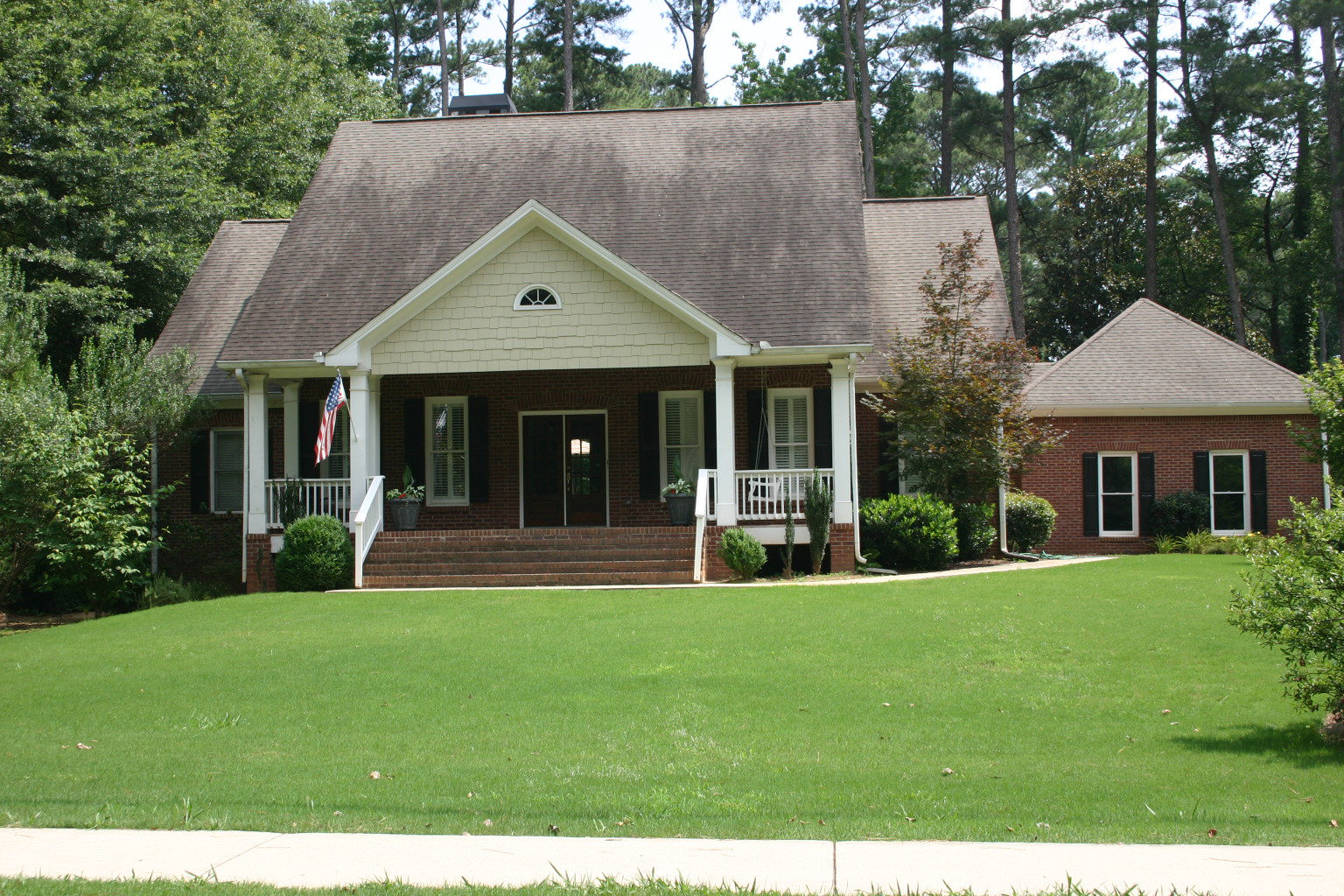Lawn Fertilizing – Summary

The amount of fertilizer to apply to your lawn should be determined by a soil test (www.georgiasoiltest.com or by calling 1-800-ASKUGA-1. If you have not had your soil tested, or don’t have time to do the test, following are some rule-of-thumb recommendations for using lawn fertilizers found at garden centers.
Generally speaking, there is not much difference between brands if you follow the label directions excatly..
Bermudagrass: The first application of fertilizer to bermudagrass should be made in spring when the grass is 50% green OR when soil temperatures are above 65 degrees F. Visit www.georgiaweather.net to determine local soil temperature.
Fertilize bermudagrass every six weeks thereafter until mid-September. A “winterizer” fertilizer may be applied in mid-September but no later.
Do not fertilize after mid-September.
Centipedegrass: The first application of fertilizer to centipedegrass should be made in spring when the grass is 50% green OR when soil temperatures are above 65 degrees F. Visit www.georgiaweather.net to determine local soil temperature.
Fertilizer should be applied twice. The first application of fertilizer should be during or after spring greenup and then again in mid summer. Do not apply fertilizer in fall.
There are many different brands of lawn fertilizer. Centipede lawns will do fine with a generic analysis of fertilizer such as 16-4-8. 16-4-8 fertilizer should be applied at a rate of 4 pounds per 1000 square feet each time. One can also use 15-0-15 centipedegrass fertilizer at a rate of 5 pounds per 1000 square feet.
Although centipedegrass will tolerate acid soil, liming it up to pH 6.0 will help it look its best.
Fescue: Fescue grass is a cool-season grass. It does the majority of its productive growth between September and June. For this reason, fertilizer applications should be concentrated in the fall, winter and early spring.
Fertilizer should be applied three or four times between September and May. The times to apply are generally in late September, in November, in February and perhaps in April.
Fertilizing fescue in the summer is not recommended. Fertilizing in hot weather robs food from the roots of the grass and makes it more susceptible to drought and disease. Do not be tempted to fertilize a fescue lawn like you would a bermudagrass lawn.
If your fescue turns a bit yellow in July, apply a product that contains water-soluble iron (Ironite, etc).
Zoysiagrass: The first application of fertilizer to zoysiagrass should be made in spring when the grass is 75 – 100% green OR when soil temperatures are above 65 degrees F. Visit Georgia Weather to determine local soil temperature.
Fertilize zoysiagrass every seven weeks thereafter until mid-September. At that time, and no later, you may choose to apply a “winterizer” fertilizer.
Do not fertilize after mid-September.
St. Augustinegrass: The first application of fertilizer to St. Augustine grass should be made in spring when the grass is 50% green OR when soil temperatures are above 65 degrees F. Visit www.georgiaweather.net to determine local soil temperature.
Fertilize St. Augustine grass every six weeks thereafter until mid-September.
Do not fertilize after mid-September.
Lime: If the lawn has not been limed in the last few years, the soil is probably acid. You can apply 40 pounds of lime per 1000 square feet in the fall or spring. A soil test might determine that you need more – but this is a moderate amount, which is certainly better than nothing.
You can put down lime and fertilizer at the same time. As long as the turf is dry, the particles of either one will not stick to grass blades. They will simply fall to the ground and will start their good work as soon as it rains.
How to Apply: Cyclone spreaders and drop spreaders can do a good job. Make sure the spreader is set properly to apply the right amount of fertilizer. It is best to apply half of the fertilizer going back and forth on the lawn and the other half while traveling at right angles to the first trip. This will give even coverage so you do not get streaks of yellow and green in the lawn




















